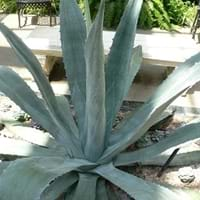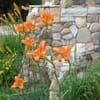Life Span
Perennial
Perennial
Type
Bulb or Corm or Tuber
Cactus or Succulent
Origin
Southern Africa, South Africa
Mid-Atlantic United States, Southeastern United States, Central United States, South-Central United States
Types
Cusick's camas, large camas
Not Available
Habitat
meadows, moist forests, Open Plains
Desert, Hardwood forests, Hillside, Humid climates, Rocky Ridges, wastelands
USDA Hardiness Zone
8-10
6-11
AHS Heat Zone
Not Available
11-5
Sunset Zone
21,22
Not Available
Habit
Rosette/Stemless
Rosette/Stemless
Flower Color
White, Yellow, Red, Blue, Purple, Pink, Lavender, Violet
Light Green, Gray Green
Flower Color Modifier
Bicolor
Not Available
Fruit Color
Not Available
Tan
Leaf Color in Spring
Green
Green
Leaf Color in Summer
Light Green
Green
Leaf Color in Fall
Several shades of Green
Green
Leaf Color in Winter
Light Green
Green, Dark Green
Leaf Shape
Long slender
Long linear and narrow
Plant Season
Spring, Winter
Spring, Summer, Fall
Sunlight
Full Sun, Partial Sun
Full Sun, Partial Sun, Partial shade
Growth Rate
Medium
Not Available
Type of Soil
Loam
Loam, Sand
The pH of Soil
Acidic, Neutral
Neutral, Alkaline
Soil Drainage
Well drained
Well drained
Bloom Time
Early Spring, Spring, Late Winter, Indeterminate
Late Spring, Early Summer, Summer
Tolerances
Black Walnut Toxicity, Rabbit, Shade areas
Not Available
Where to Plant?
Container, Ground, Pot
Ground, Pot
How to Plant?
chipping, Offsets, scooping, Twin scaling, Vegetative
Seedlings
Plant Maintenance
Low
Medium
Watering Requirements
Medium
Average Water Needs, Does not require lot of watering
In Summer
Lots of watering
Lots of watering
In Spring
Moderate
Moderate
In Winter
Average Water
Average Water
Soil pH
Acidic, Neutral
Neutral, Alkaline
Soil Type
Loam
Loam, Sand
Soil Drainage Capacity
Well drained
Well drained
Sun Exposure
Full Sun, Partial Sun
Full Sun, Partial Sun, Partial shade
Pruning
Remove damaged leaves, Remove dead branches, Remove dead leaves
Remove damaged leaves, Remove dead branches, Remove dead leaves
Fertilizers
All-Purpose Liquid Fertilizer, General garden fertilizer, Time release fertilizer
All-Purpose Liquid Fertilizer
Pests and Diseases
Pests and diseases free
Red blotch
Plant Tolerance
Black Walnut Toxicity, Rabbit, Shade areas
Drought
Flowers
Showy
Not Available
Flower Petal Number
Single, Double, Semi-Double
Single
Foliage Texture
Medium
Bold
Foliage Sheen
Glossy
Matte
Attracts
Insects
Not Available
Allergy
Asthma
Skin irritation
Aesthetic Uses
Bouquets, Cottage Garden
Showy Purposes
Beauty Benefits
For treating wrinkles, Remove blemishes, Skin Problems
Not Available
Edible Uses
Sometimes
Yes
Environmental Uses
Air purification, Forms dense stands, Very little waste
Air purification
Medicinal Uses
Leucoderma, Urinary problems
constipation, Gastrointestinal disorders
Part of Plant Used
Bulbs, Root
Leaves, Sap, Seeds, Stem
Other Uses
Animal Feed, Decoration Purposes, Showy Purposes
Pulp can be used to make rope place mats and other goods, Used in making beverages
Used As Indoor Plant
Yes
No
Used As Outdoor Plant
Yes
Yes
Garden Design
Bedding Plant, Container, Cutflower, Mixed Border, Rock Garden / Wall
Container, Mixed Border, Rock Garden, Wall, Wildflower
Botanical Name
Hyacinthus orientalis
MANFREDA virginica
Common Name
Hyacinth, common hyacinth, garden hyacinth, dutch hyacinth
Century plant
Maguey
American aloe
In Hindi
ह्यचीन्थ
अमेरिकी मुसब्बर
In German
Hyazinthe
amerikanischen Aloe
In French
jacinthe
américaine Aloe
In Spanish
jacinto
Americana Aloe
In Greek
υάκινθος
Αμερικανός Αλόη
In Portuguese
jacinto
americano Aloe
In Polish
hiacynt
Amerykański Aloe
In Latin
et hyacinthinas,
American Aloe
Phylum
Magnoliophyta
Not Available
Class
Liliopsida
Liliopsida
Order
Liliales
Asparagales
Family
Liliaceae
Agavaceae
Clade
Angiosperms, Monocots
Angiosperms, Monocots
Tribe
Not Available
Not Available
Subfamily
Scilloideae
Agavoideae
Season and Care of Wild Hyacinth and American Aloe
Season and care of Wild Hyacinth and American Aloe is important to know. While considering everything about Wild Hyacinth and American Aloe Care, growing season is an essential factor. Wild Hyacinth season is Spring and Winter and American Aloe season is Spring and Winter. The type of soil for Wild Hyacinth is Loam and for American Aloe is Loam, Sand while the PH of soil for Wild Hyacinth is Acidic, Neutral and for American Aloe is Neutral, Alkaline.
Wild Hyacinth and American Aloe Physical Information
Wild Hyacinth and American Aloe physical information is very important for comparison. Wild Hyacinth height is 10.20 cm and width 5.10 cm whereas American Aloe height is 30.50 cm and width 35.60 cm. The color specification of Wild Hyacinth and American Aloe are as follows:
Wild Hyacinth flower color: White, Yellow, Red, Blue, Purple, Pink, Lavender and Violet
Wild Hyacinth leaf color: Green
American Aloe flower color: Light Green and Gray Green
- American Aloe leaf color: Green
Care of Wild Hyacinth and American Aloe
Care of Wild Hyacinth and American Aloe include pruning, fertilizers, watering etc. Wild Hyacinth pruning is done Remove damaged leaves, Remove dead branches and Remove dead leaves and American Aloe pruning is done Remove damaged leaves, Remove dead branches and Remove dead leaves. In summer Wild Hyacinth needs Lots of watering and in winter, it needs Average Water. Whereas, in summer American Aloe needs Lots of watering and in winter, it needs Average Water.





